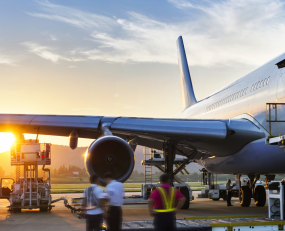
The roll-out of 5G in the US has had a sudden impact on civil aircraft services, including airfreight. A string of airlines have either cancelled or changed services into the US over the past 48 hours, including Emirates, British Airways, Japan Airlines, All Nippon, Cathay Pacific, Air India and Korean Airlines. Many have switched from using Boeing 777 or 767 to other types of aircraft apparently in response to a technical advisory note from Boeing, although Boeing has not confirmed this.
Such has been the concern expressed by the airline sector that both Verizon and AT&T agree on January 19th, to delay the switching-on of their 5G service around airports by two weeks.
The concerns focus on the effects of 5G on certain types of altimeters used for landings in bad weather. According to a statement from the Federal Aviation Authority (FAA) released today, “because the proposed 5G deployment involves a new combination of power levels, frequencies, proximity to flight operations, and other factors, the FAA will need to impose restrictions on flight operations using certain types of radar altimeter equipment close to antennas in 5G networks”. Apparently, the FAA believes that the US antennas are more powerful than those used elsewhere, whilst other countries mitigate the impact of emission by tilting the downwards. Frequencies also vary, although South Korea also uses a similar frequency to the US and has not reported any problems. Another issue is that US airports have lower safety margins on approach and therefore aircraft are more reliant on their instruments.
It is surprising that a solution to this was not found earlier. As Delta Airlines commented that the FAA had “issued numerous notices that restrict flight activity near airports where this new deployment of 5G service in the C-band spectrum could cause limited interference with altitude instruments on aircraft under various weather conditions that aircraft safely operate in today”. IATA has explored this issue, publishing a short document on the problem. However, most of its evidence is theoretical and the only real-life example of problems it could point to was the interference with radio altimeters by Israel’s ‘Iron Dome’ anti-missile system as aircraft flew into Tel Aviv.
The implication of the statement from the FAA is that it is the design of the system being used in the US that is the problem. The combination of the frequency, the power of the transmissions and the type of arial used makes the 5G system in the US more of a threat to aircraft than elsewhere in the world. It is hard to understand how this is has been allowed to happen in the US. It is also unclear if 5G will be a problem elsewhere in the world.
Source. Transport Intelligence, 20th January 2022
Author: Thomas Cullen